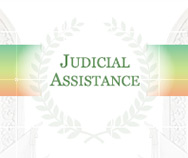Judicial Transparency of Chinese Courts
Foreword
“Justice is not to be done, but to be seen done.”Judicial transparency is an important means to facilitate judicial fairness, prevent corruption in the judicial system and improve judicial competence, and is the crux to carry out the constitutional and juristical principles and protect the litigation rights of citizens and demonstrate modern legal civilization, and is also a must in comprehensively promoting the rule of law and accelerating the construction of China’s rule of law.
People’s courts have been paying high attention to judicial transparency and always treated it as an important constituent to deepen the reform in judicial system and working mechanism, and taken various measures to constantly expanding the width and depth of judicial transparency, and made innovations on forms and channels of judicial transparency, and spent great efforts in building up an open, dynamic, transparent and convenient sunshine judicial mechanism.
In the new century and new stage, facing new requirements in the work of the Party and the State, new expectations of the masses and new challenges in the era of information, the deepening of judicial transparency has become more important and urgent. The 8th Central Committee of the Communist Party has emphasized on the promotion of disclosure and standardization of the exercise and operation of powers, and the 3rd and 4th Plenary Sessions of the 8th Central Committee of the Communist Party have proposed to deepen the judicial transparency. As the legal construction process accelerates, the general public has stronger expectations on the transparency of judicial transparency. With the rapid development of big data, cloud computing and new media, the speed, models and patterns of information dissemination change greatly, and the masses’ demands for judicial information vary, and under the new situation, the promotion of judicial transparency is facing an unprecedented opportunity and great challenges. Judicial Transparency of Chinese Courts
I. Basic Situation of the Promotion of Judicial Transparency by People’s Courts
It has always been an important work of the people’s courts and an important measure in judicial reform, to promote judicial transparency. As early as in 1999, the Supreme People’s Court has formulated the Several Provisions on Strictly Implementing the Open Trial System. From 2006 to 2010, the Supreme People’s Court has subsequently issued the Several Opinions on Enforcement Disclosure by People’s Courts, and the Several Opinions on Strengthening the Trial Disclosure by People’s Courts, the Six Provisions on Judicial Transparency and other normative documents, to put forward specific requirements for information disclosure on case registration, court trial, enforcement, hearing, judicial documents and administrative affairs of the court. The Supreme People’s Court has selected, appraised and confirmed 200 judicial transparency demonstration courts in two batches in October of 2010 and December of 2012, to timely summarize their experience and play their role in demonstration.
Since the 3rd Plenary Session of the 8th Central Committee of the Communist Party, people’s courts have accelerated the promotion of judicial transparency. The Supreme People’s Court has successively issued the Several Opinions on Promoting the Construction of Three Platforms for Judicial Transparency, the Provisions on Publishing Judgments, Verdicts and Reconciliation Statements on Internet by People’s Courts, the Several Opinions on Enforcement Process Disclosure by People’s Courts and other normative documents, aiming to rely on modern information technologies to promote the construction of “Three Platforms” , i.e. the trial process disclosure platform, the platform of disclosure of judgments, verdicts and reconciliation statements, and the platform of the enforcement information disclosure, and to make use of network, Weibo, WeChat, mobile news client and other media, and to further expand the width and depth of the judicial transparency work. Local people’s courts at all levels have constantly made innovations on judicial transparency measures and enhanced the judicial transparency and judicial creditability.
Further Transformation on Concept of Disclosure. Mr. ZHOU Qiang, chief justice of the Supreme People’s Court indicated that, judges shall not be afraid of the “pickiness” of the masses or making fool of themselves; otherwise, the judicial powers will never walk in the sunshine. People’s courts at all levels shall constantly update their concepts on judicial transparency and take it as granted to make disclosure, with exceptions only in a very few cases; and shall make efforts in changing the passive disclosure into active disclosure, internal disclosure to external disclosure, optional disclosure to full disclosure and disclosure in disguised form to substantial disclosure.
Further Expansion on Content of Disclosure. The content of judicial transparency shall be expanded from open trial to the open and disclosure of case acceptance and registration, court trial, execution, hearing, documents and administrative affairs concerning court and proceedings, and from open to the parties concerned to open to the public, and from disclosure of results to full disclosure of bases and grounds, procedures, process and results.
Further Optimization on Platform of Disclosure. The Supreme People’s Court has built up several websites for nationwide disclosure of information on trial process (http://www.court.gov.cn/zgsplcxxgkw/), judgments and verdicts (http://www.court.gov.cn/zgcpwsw/zscqhz/), person subject to enforcement (http://zhixing.court.gov.cn/search/) and court trial (http:// ts.chinacourt.org/), changing from the separate disclosure by courts at different places to the centralized disclosure on an open platform.
Further Innovation on Form of Disclosure. The people’s courts at all levels shall make full use of modern information technologies to constantly expand the channels and ways for the public to obtain judicial information by building websites on administrative affairs of courts and 12368 litigation service platform, and making public Weibo and WeChat IDs, mobile news client and president’s email, so as to explore the threedimensional, onestop, comprehensive and interactive judicial transparency services to build up a more transparent and open judicial environment.









